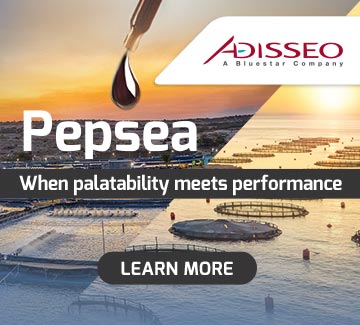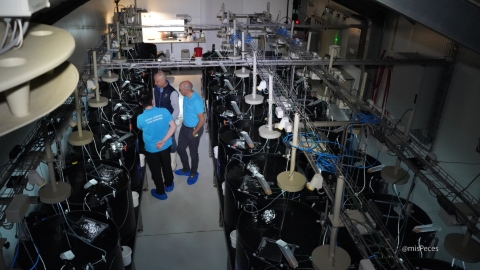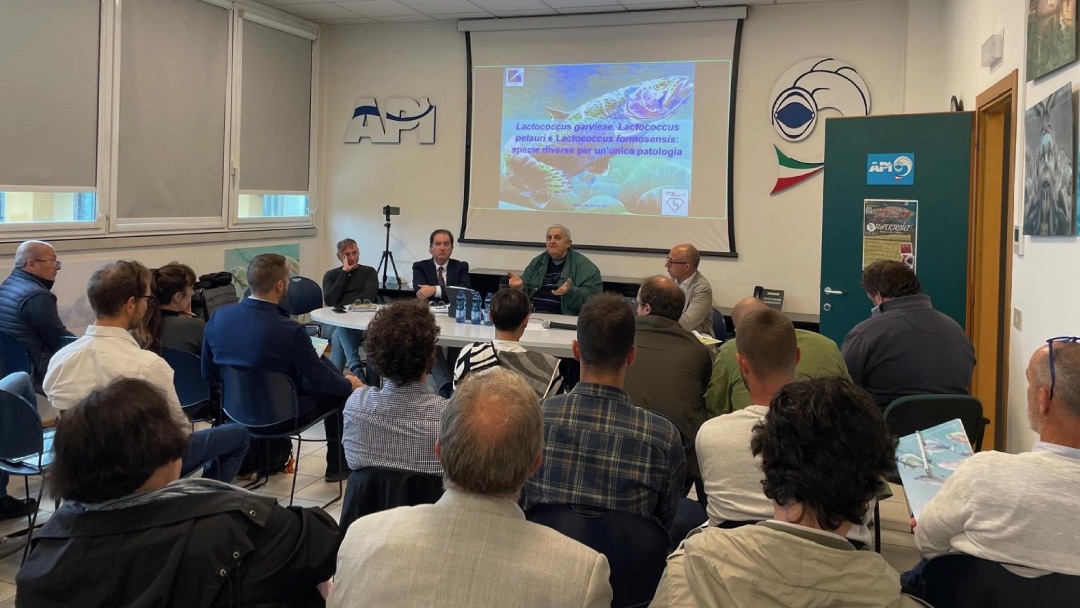
Italian researchers and experts warn of the importance of taking effective action against lactococcosis, a bacterial disease which, although it primarily affects rainbow trout farms, has now also been detected in marine fish farms such as gilthead sea bream and European seabass.
During the presentation of the results and progress of the SUPERTROUT project at the headquarters of the Italian Fish Farmers' Association (API) in Verona, operators and experts discussed this problematic disease, which is threatening the sustainability and profitability of the country's aquaculture producers.
Andrea Fabris, director of the Italian Fish Farmers' Association, pointed out that although lactococcosis is not the only cause of the 25% decline in rainbow trout production in Italy over the last few decades — which has dropped from 45,000 to 30,000 metric tonnes — it is having a significant impact. This effect is particularly pronounced in summer, when water temperatures rise and the bacterium becomes more virulent.
The project has received funding from the PRIMA programme (Partnership for Research and Innovation in the Mediterranean Area) and has involved research institutes in Italy, Spain, Turkey, and Greece.
Among the species of Lactococcus detected, L. garvieae and L. petauri stand out. Although there is a third species, L. formosensis, this has only been found in land-based farms in China and not in fish farms.
Research has shown, for example, that L. petauri is more common in Spain, while L. garvieae predominates in Italy.
In marine fish such as gilthead sea bream and European seabass, lactococcosis emerged as a disease in 2023, with both bacterial species present. Experts also warn that the disease has affected bluefin tuna fattening farms.
Progress of the SUPERTROUT project
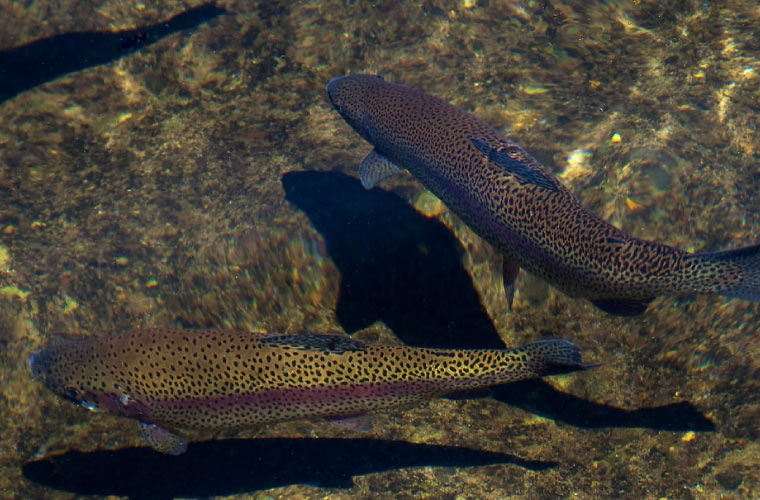
The SUPERTROUT project has excelled in several areas. One of these is the development of an approach based on selecting resistant fish using genetic and genomic markers, in addition to the development of an immersion vaccine. The researchers have identified polymorphisms associated with resistance to lactococcosis in rainbow trout, opening new opportunities for breeding more resistant fish and improving aquaculture production systems.
Moreover, it was highlighted that Lactococcus pathogen strains are highly prevalent in the Mediterranean area, and conventional diagnostic techniques are not always effective in distinguishing between pathogenic species. To address this challenge, a new identification method has been developed that allows precise classification of bacterial strains, significantly improving control strategies.
The results also showed high resistance to several common antibiotics, underscoring the need for further investigation into the development of non-pharmacological solutions.
While effective therapies continue to be developed, prophylaxis remains one of the best protective measures. Researchers report that well-managed and planned prophylaxis can improve farm conditions, with tangible benefits.
Lactococcosis problems in Mediterranean marine species
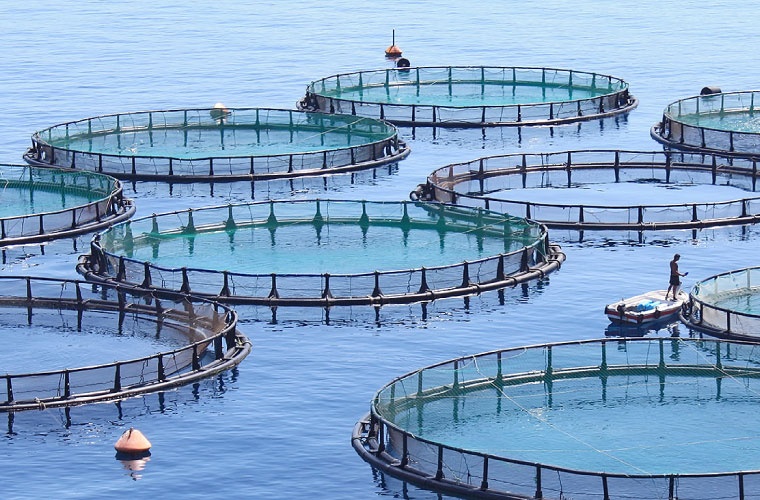
In addition to rainbow trout, this bacterial disease has also been detected in marine farms of gilthead sea bream and European seabass in Italy and Spain, with a high risk of spreading throughout the Mediterranean area. This highlights the need for greater collaboration between affected countries.
Researchers have expressed concern about the outbreaks present in the national territory, emphasising the urgency of conducting "further studies" and developing biosecurity procedures, genetic selection, vaccination, and appropriate therapies to counteract the spread of this disease. This situation is increasingly becoming a limiting factor for the production and development of aquaculture in Italy and the Mediterranean region.

